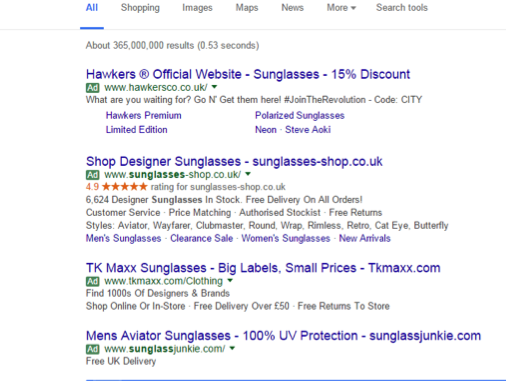
Google has made some significant changes to the SERPs by rolling out AMP (Accelerated Mobile Pages) for ecommerce.
As of the August 22, the AMP project now provides the option to build aspects of eccommerce sites, such as product and category pages.
It seemed only a matter of time before this would occur, especially after eBay announced the launch of 8 million AMP-enabled pages, but what exactly does it mean, and how should retailers react?
What are the key changes for retailers?
Anything that can increase conversion rates will always be welcome news for retailers, and the improvements in page load speeds that AMP brings will most likely help to achieve this.
Furthermore, Google will display AMP pages in the search results, rather than just in the carousel. It’s important to note that this update does not affect rankings directly (yet), although site speed and on-site engagement metrics, which AMP is focused on, could have an impact on your rankings.
Over time, it is also possible that Google will favour sites running AMP as they will cater for the growing mobile audience too.
Although AMP pages aren’t the most adaptable or customizable at this stage, some large retailers (including eBay) are partnering with Google to test features such as smart buttons and advanced tracking, so we should expect a lot more developments in future. You can check out the proposed timeline with upcoming changes here.
Richard Gingras, Google’s head of news and social products explains:
“This is a very big step forward simply in terms of the amount of traffic we will now see going to AMP files — by far the biggest so far, in terms of increasing overall AMP adoption and traffic.”
What does this mean for ecommerce?
Google says that ‘AMP is a natural fit for ecommerce because AMP makes webpages fast, and fast pages help with purchase conversions.’ If you want to see what sort of results are coming up with AMP searches, click this link and perform a search from a mobile device.
The aim for this project will ultimately be to provide a complete overhaul of the mobile e-commerce experience, utilizing stripped-back HTML to provide quicker load speeds, but also faster transitions between products.
This is certainly something retailers will want to bear in mind as they craft product pages and select images.
AMP could provide a boon for early adopters, as we will expect this to become the industry standard for all ecommerce sites in time – much in the same vein as the ‘mobile friendly’ tags, recently removed from SERPs now that over 85% of sites meet the criteria.
The lightning bolt tag displayed alongside results will also lead to higher click-through rates as consumers realize that they relate to faster loading speeds, so there is an additional benefit here.
How should retailers react?
This should be viewed as a great opportunity to provide a better mobile experience and increase conversion rates. Implementing AMP may not be a straightforward process, but this open-source initiative does come with a lengthy list of best practices to aid developers.
If you are still on the fence as to whether you should make your content AMP compliant, these recent changes just might tip you over the edge.
Written by Clark Boyd, VP, Strategy at Croud and Andy Cooney, Head of SEO.
Source: ClickZ
Link: Google AMP evolves to tackle ecommerce



Leave a Reply